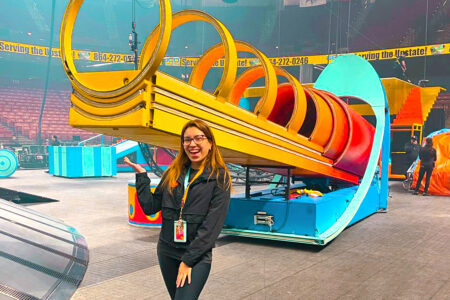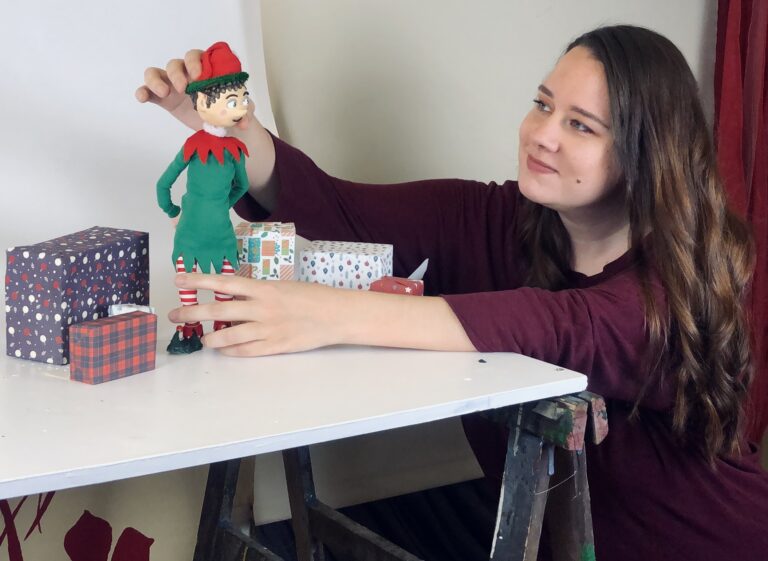
Growing up in a small village in West Germany where creative careers weren’t common, Maraike Kraemer never expected her future to be in the stop motion animation industry.
Then, the thought of working at four-time Academy Award-winning studio Aardman Animations, creators of “Wallace & Gromit” and “Shaun the Sheep,” was a far-flung dream.
And Kraemer didn’t even go to design school until she regretted signing up for a business administration programme.
Still, having just moved six hours from home to study business at the Technische Hochschule Nürnberg Georg Simon Ohm, she gave it two months before calling it quits.
By then, she was seriously considering the university’s Bachelor of Arts in Design instead — that is, if they would accept her.
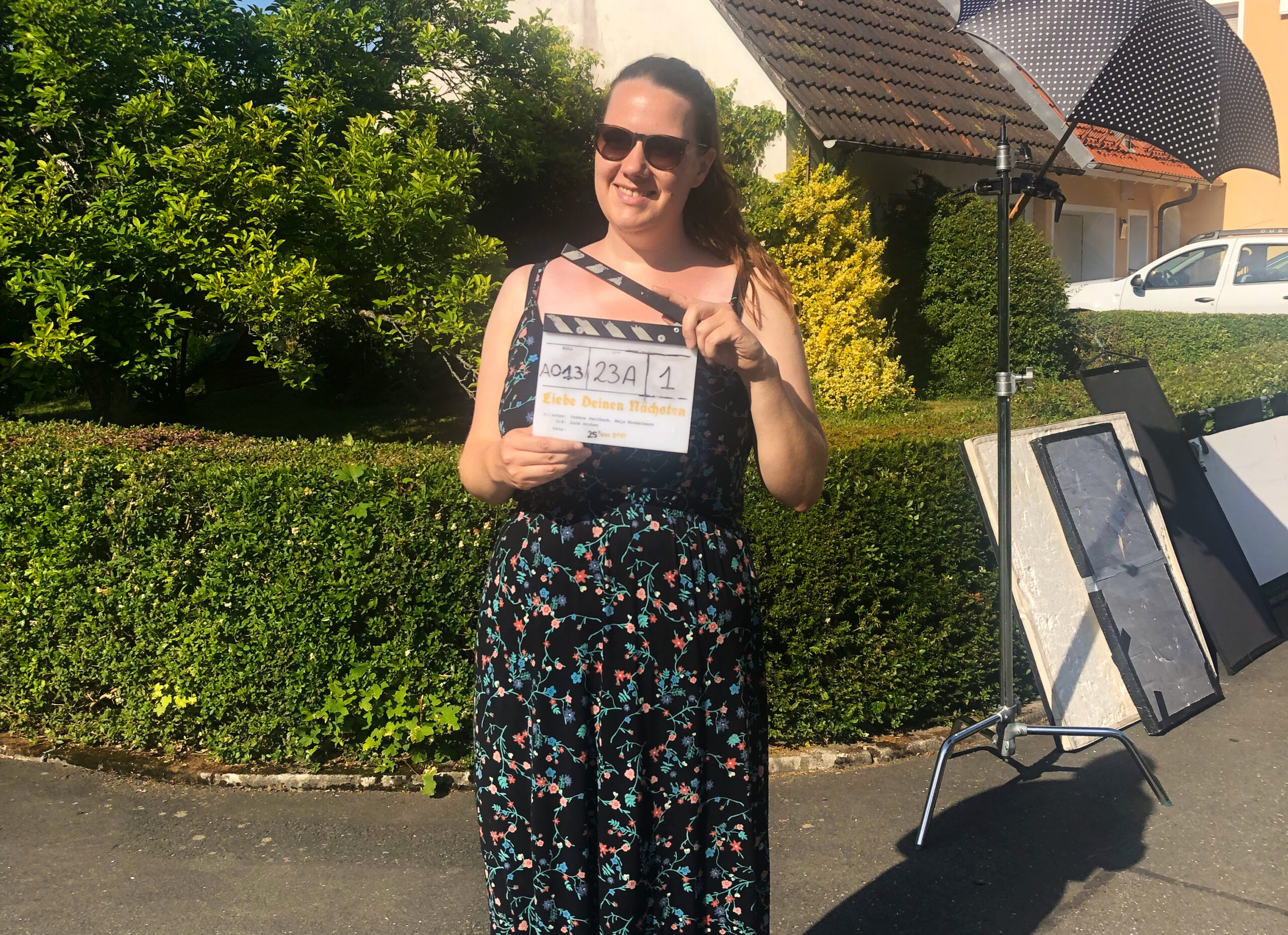
Kraemer’s current success is the result of her go-getter attitude – something she still carries to this day and a very necessary trait to find success in the stop motion animation industry. Source: Maraike Kraemer
If at first you don’t succeed, try, try, and try again
As a 22-year-old, who, despite having worked as an au pair in the US for two years and spent a year interning at a lawyer’s office in Germany, Kraemer had no formal design knowledge or portfolio to help her get into the programme.
Kraemer’s first application required her to submit 40 pieces of work – animation, graphic design, illustration, or anything that fit the field.
In Kraemer’s words, she put in “some horrible illustrations, some even worse pictures – one of it being a random picture of a tree.” It was a lot of work for a beginner, but ultimately, the school turned her down.
Undeterred by her first failure, Kraemer tried again, this time with a better plan. She moved back to her parents’s house and did a six-month unpaid internship at a photography studio near home.
“It was one of those things you do just for the experience,” says Kraemer. She also shared that she’d work on the weekends to earn some money on the side and had informed her boss of her predicament – that she desperately needed to learn and do all she could to submit better materials for her next application.
By the end of her internship, Kraemer was ready for her second application. Sure enough, she was invited back to the university to proceed to the next round of tests in the application process.
This time, over two to three days, Kraemer was answering design-related questions like naming five female directors and completing tasks like illustrating a storyboard and coming up with a photography campaign after spending two hours in the city – all of which Kraemer believes she fell short in.
But the saying goes: the third time’s the charm.
Kraemer spent another six months in an internship, this time at a TV station. There, she learned the ropes of pre- and post-production as she interviewed and edited interviews and documentaries of people.
When the next round of applications came by, she was more prepared than ever, and her hard work yielded results – she was accepted into the programme, and that was the start of a new and very exciting chapter ahead.
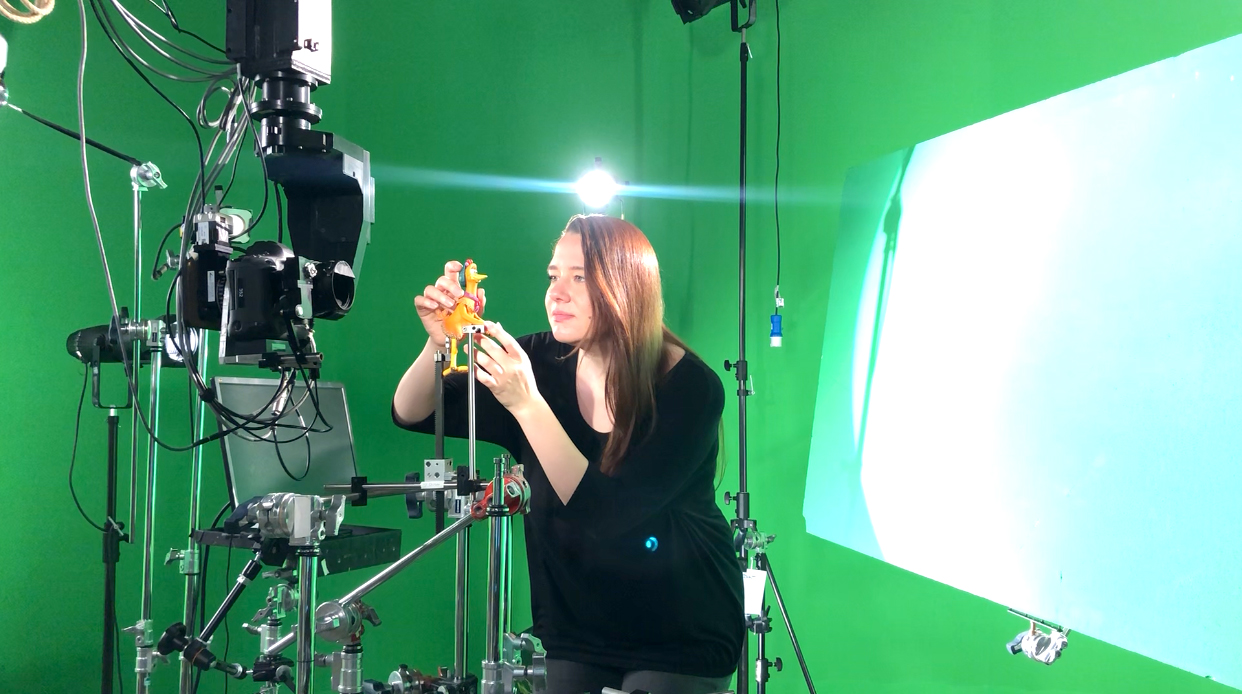
The broad coverage of design curriculums allows you to try your hand at different art forms and mediums. For Kraemer, she found her passion in illustration and later in stop motion animation. Source: Maraike Kraemer
How to find your niche as a designer
Many design programmes in universities worldwide offer a very broad coverage of the subject. If you don’t enrol in specific programmes, like game design or industrial design, for instance, you’re more than likely to be exposed to the sheer range behind the “design” degree and find a niche on your own throughout your courses.
For Kraemer, her interest in animation was stoked slowly. Every semester, Kraemer had new projects to tackle, from short 30-second advertisements to the title sequence for an imaginary film and even a music video.
By her fourth semester, students in Kraemer’s programme were making short films. Most of Kraemer’s work at that point was of the live-action genre, but an instance of helping friends with their animation project sparked a new idea.
“I said I wanted to do something that’s not on a computer, and I had a friend who was into making little miniature props and stuff, so we thought, why not?” she says. “Because we were allowed to do whatever medium we wanted, we just gave it a go because we could. That’s the fun of studying – having some freedom to just try things out.”
That project, “Theodor,” marked Kraemer’s first time working on stop motion animation, but it wasn’t a path she pursued immediately, though.
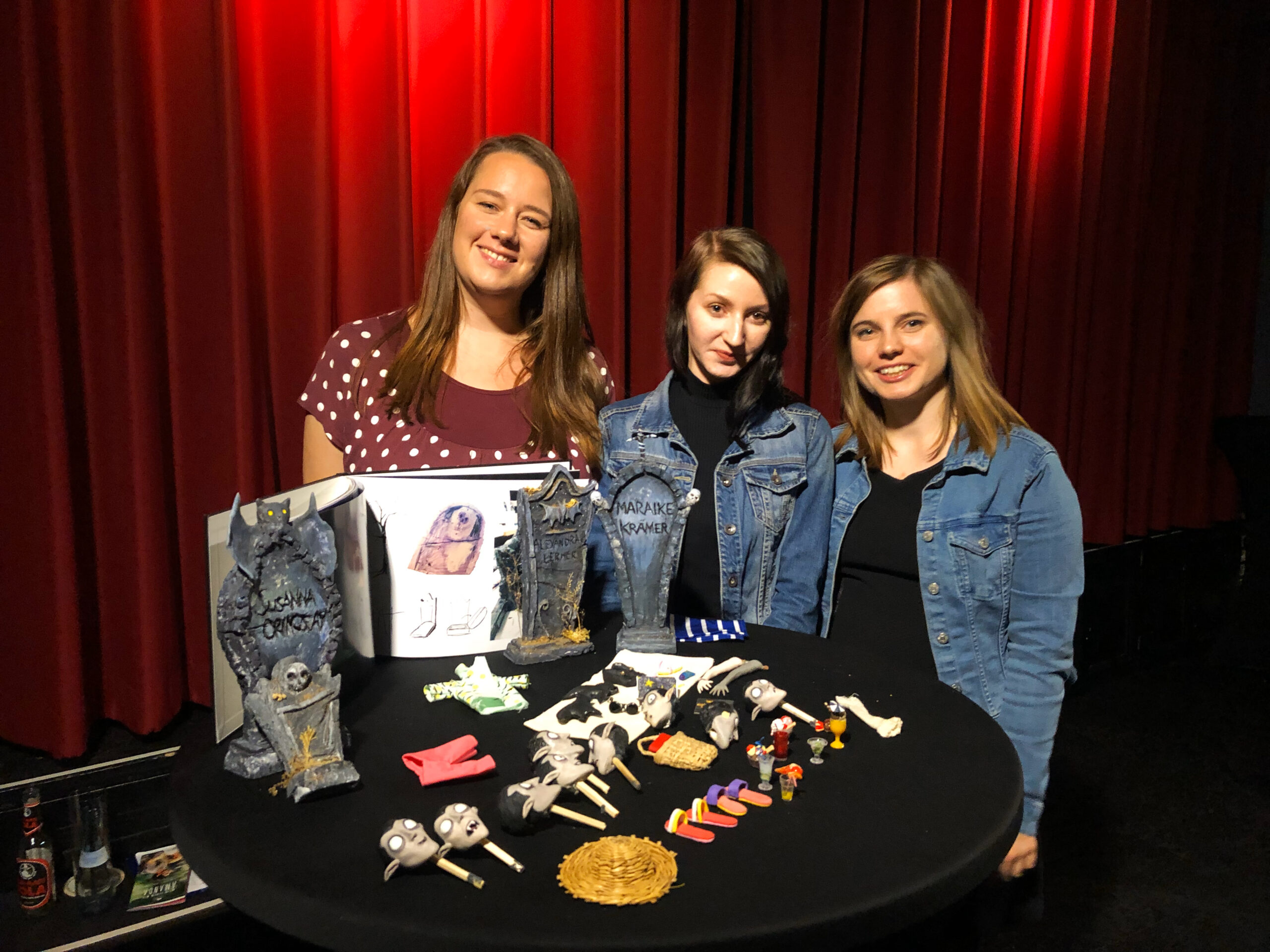
Kraemer (left) pictured with the team she worked with on the stop motion animation film “Theodor” during her university days. Source: Maraike Kraemer
By the time Kraemer graduated, she was already working – and loving her work – as a freelance illustrator. The remote nature of her career allowed her to relocate to Brighton in the UK, and all was well – until she got tendinitis in her wrist.
“It got so bad after a few months that I had to quit illustrating completely,” she says. “I had to tell my clients ‘I can’t do this anymore. I can’t lift a pen; I’m in so much pain.’”
In what was undoubtedly the “worst time of her life,” Kraemer moved back to her parents’s home in Germany once more and had to reassess her life and what her future held. Her answer? Aardman Academy’s 12-week, online “Stop Motion 1” workshop – the first of its kind.
To her surprise, Kraemer was accepted into the course and completed it all in her childhood bedroom. However, the course offered no long-term promises or plans.
“Doing the course doesn’t mean getting a job at Aardman; the course was just a nice distraction,” says Kraemer.
So, throughout her lessons, Kraemer worked part-time as a remote video editor for a company in Berlin and later found a second part-time job as a childminder in Munich, where she had then relocated to.
It was a stroke of luck that a few months later, Aardman Animations posted a job opportunity: a traineeship at the studio in Bristol, England.
“I reached out to my mentor from my time during the Stop Motion 1 course at Aardman and told him I wanted to work there,” says Kraemer. “But the thing is, everyone says that, and because Aardman’s never done this traineeship before, there was no proof that anyone would ever get a job.”
In Kraemer’s words, “it was a completely ridiculous thing to say that I wanted to work there.”
Absurd or not, she applied for the role nonetheless. A week later, she secured an interview. The next day, she got the role. Kraemer was called to duty in Bristol for the following week.
“The week before that was the worst week of my life,” laments Kramer. German laws and regulations require an employee to give a three-month notice period. Those renting homes are meant to do the same.
Not only that, a major video editing project was just about to land in Kraemer’s hands; leaving the company now, when her talents were needed most, would be next to impossible.
It was a decision she was ready to accept – that she would not be going to Bristol.
“My friends called me insane,” laughs Kraemer. “People were telling me I needed to do this, that if I didn’t want the job because I wanted to be a video editor, that was fine, but if I wanted to work in animation, this is the opportunity.”
After much discussion and negotiating, the result was this: Kraemer would find a suitable replacement for her video editing role while she’d work remotely on the evenings and the weekends. She’d also have to return full-time to her role once her two-month traineeship was up.
With that, Kraemer was off to Bristol. For two months, she’s spent 40 hours a week working what her role at Aardman required of her and video editing every weekend she had.
Her hard work paid off when, on the last day of her traineeship at Aardman, she was offered the role of Junior Assistant Animator on the studio’s stop motion animation feature film, “Chicken Run: Dawn Of The Nugget” (2023).
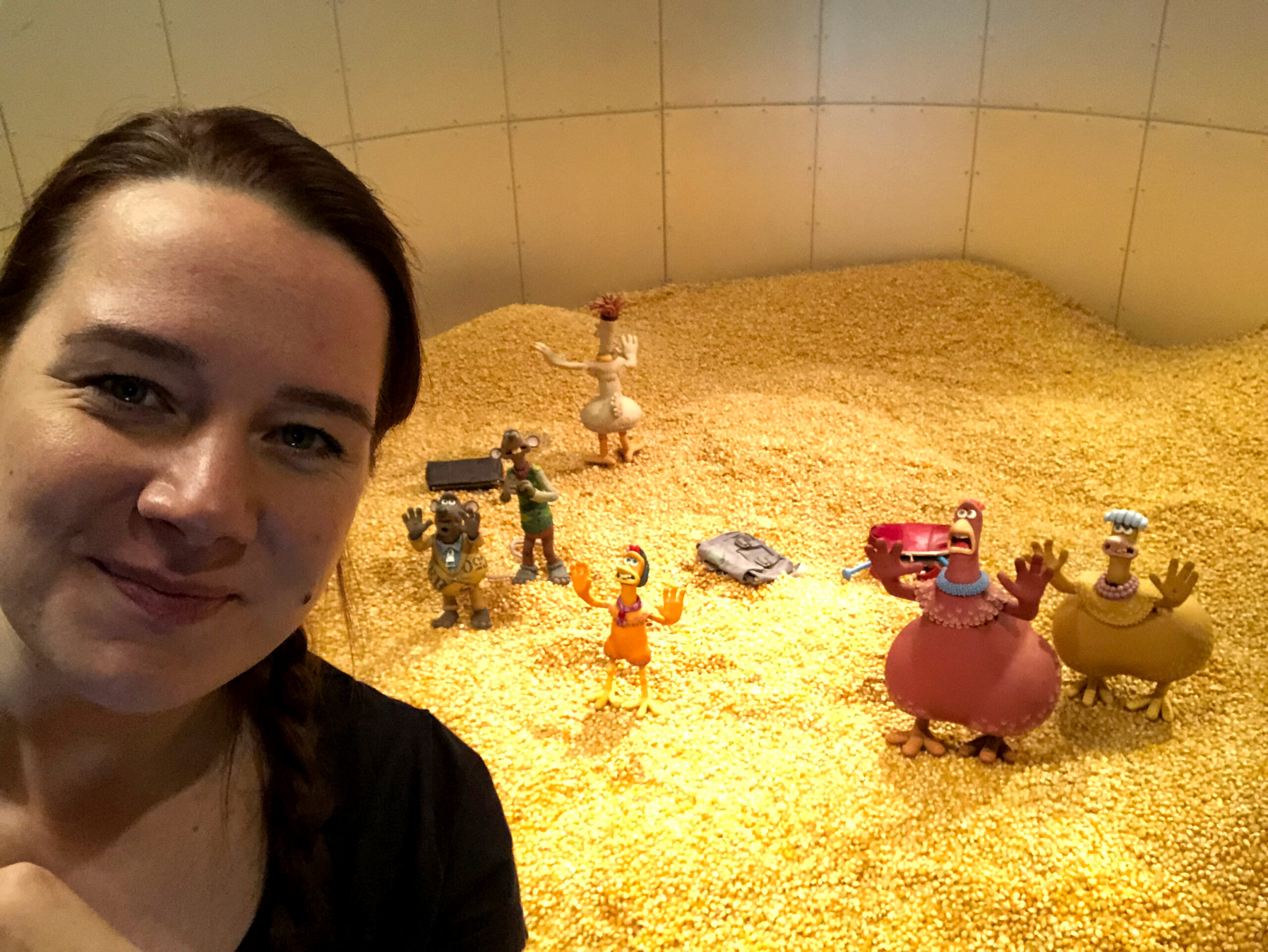
Kraemer pictured on the set of the stop motion animation film “Chicken Run: Dawn Of The Nugget” (2023), where she participated in as a Junior Assistant Animator. Source: Maraike Kraemer
The relentless and rewarding life of stop motion animation
That avian-centred stop motion animation film movie would go on to win mass and critical acclaim — including the BAFTA for Best Animated Film.
Kraemer accepted the role immediately — but first, there were things she had to settle.
“I have a flat and a job waiting for me back in Germany,” she says. “I need at least three months to quit all of this officially and figure out what to do with the things in my house. I need to sort out my life.”
Fortunately, the offer wasn’t a “start now or never” deal.
Aardman understood where Kraemer was coming from and offered her a later start date, allowing her the necessary time she needed to wrap up life in Germany and start her new one in their studio.
Kraemer hasn’t looked back since.
After working as the Junior Assistant Animator on the studio’s feature film, “Chicken Run: Dawn Of The Nugget” (2023), her next role came quickly, this time as an Assistant Animator on “Wallace & Gromit: Vengeance Most Fowl” (2024). That was followed by her work as a Junior Animator on “Shaun the Sheep Series 7.”
Whether the work involved making thousands upon thousands of replacement mouth sets out of clay, coming up with eight versions of a snail moving forward, or getting to animate multiple scenes, it’s work that Kraemer enjoys to the fullest despite her shaky start.
“I didn’t actually enjoy it at the beginning because I was very scared of getting things wrong or that I wasn’t going to be good enough, but now I got into the hang of things,” admits Kraemer. “But then I got a shot with one character and then with two, and I worked my way up, and I now have six to seven characters in one shot at the same time.”
“Now that I know things can work out, and all my shots have been approved. You just get a little bit more confident, and then you start enjoying it after a few weeks.”
Kramer’s advice is sound, and she offers more of it as a mentor at Aardman Academy – the very place she picked up stop motion animation.
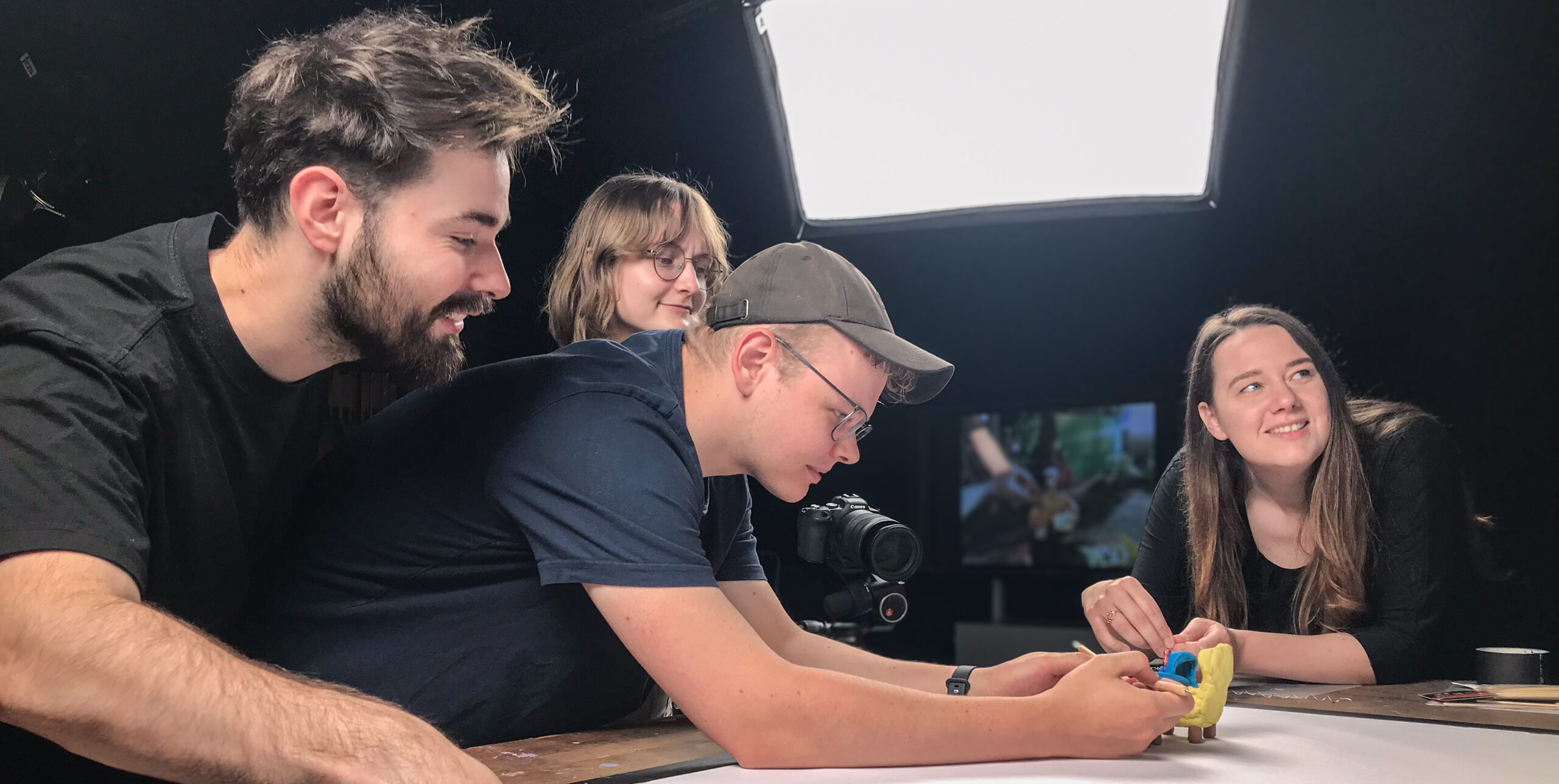
Kraemer’s (right) passion for stop motion animation and mentoring has led to the creation of her own project, Jolly Fox Studio. Source: Maraike Kraemer
Her most sage advice for those hoping to land a role in the stop motion animation? “Make sure you want it,” she says. “Decide for yourself if this is something you just like doing, or is it something you really, really, really want to go for.”
Between the tedium and long hours, passion, grit, and a genuine love for the job are what is required to stay in this line of work.
“Because at the end of the day, what you’re doing for eight hours is focusing on animating,” says Kraemer. “That’s the hardest thing because if you don’t focus, you miss something, and you forget to animate the hand, but you have everything else animated, and then the animation doesn’t work.”
It is a mentally and physically challenging task – especially if the set you’re working with requires crawling, bowing down, or going up stairs hundreds of times a day.
It’s easy to get stuck on parts of the job too. That’s why Kramer’s advice for those who are just starting their journey in stop motion animation, especially those feeling stuck animating the same bouncing ball for months, is to seek fellow animators online and ask for help.
“There’s not many in the world who do stop motion animation,” says Kraemer. “I have never met even one animator who was not happy to talk about their experience or their work or give advice.”
Reaching out is a way to build your own bubble of connections too. This is important, Kraemer emphasises, as this interaction with others in the field allows you to improve and not feel lonely in the journey “because all you do is animate in your little room in darkness by yourself, nudging a puppet around.”
The pros of the job outweigh the cons though. For instance, being surrounded by like-minded people who strive to make the best work possible, even if that involves discussing what colour the blanket in the background should be for half an hour.
“Most of my friends and family find it cool what I’m doing, but they would never sit down with me and debate over five frames of animation,” says Kraemer. “That’s the most rewarding part – getting to express yourself and be nerds about the stop motion animation together.”
If you’re interested in learning more about stop motion animation, reach out to Kraemer on Instagram or over at her new venture, Jolly Fox Studio.









